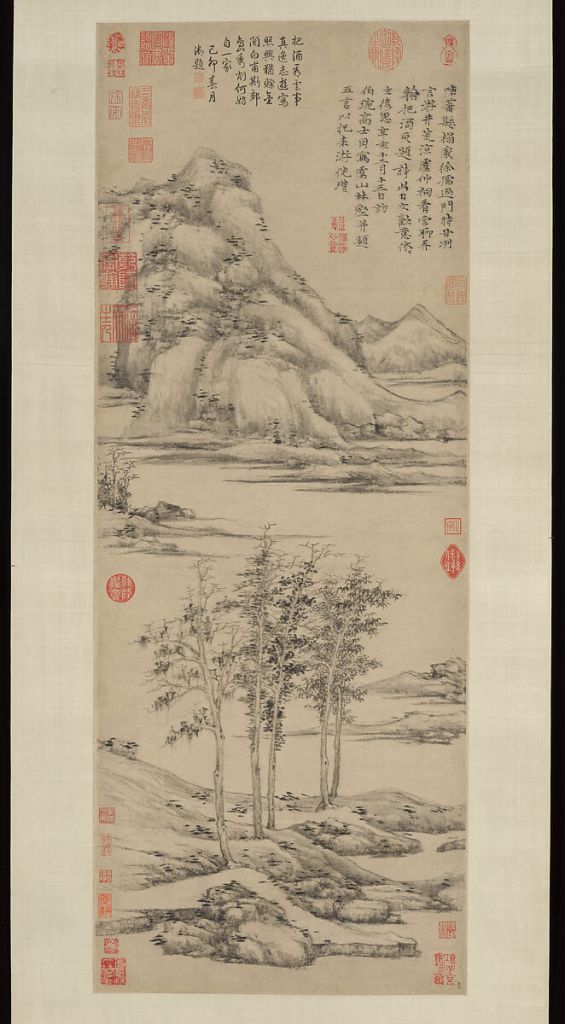February Art: landscape
In art history class I was told landscapes properly began with the backgrounds to paintings by the likes of Leonardo da Vinci and Giorgione, before foreground figures dropped away and trees took over in the highpoints of Claude Lorrain. Of course, depictions of the natural world on a flat plane began a long long time before, and art in landscapes millennia ago. But even a landskip in the Dutch sense, a topographical representation on a flat plane implying a viewpoint and depth, began well before Western art cottoned on: in China. Wintry landscapes on fan-shaped paper were a cliché by the tenth century, while large-scale wide-view or vertical long view forms are attested by the eleventh, and some say much earlier. This latter genre draws the eye from an entry point at the bottom of a hanging scroll upwards towards more distant features, as in this work by Ni Zan, The Woods and Valleys of Mount Yu (1372), executed towards the end of his life, by which time he was a refugee and supposed recluse.
Beyond the red seals, colour is not required, as the dry brush and ink technique records a lifetime of close observation in a typical group of friendly nearby trees and enticing distant hills. The accompanying poem rather celebrates the artist’s life as a companionable wanderer, self-consciously inscribing a sophisticated tradition of observation, feeling, and memory: ‘We watch the clouds and daub with our brushes / We drink wine and write poems. / The joyous feelings of this day / Will linger long after we have parted’.


